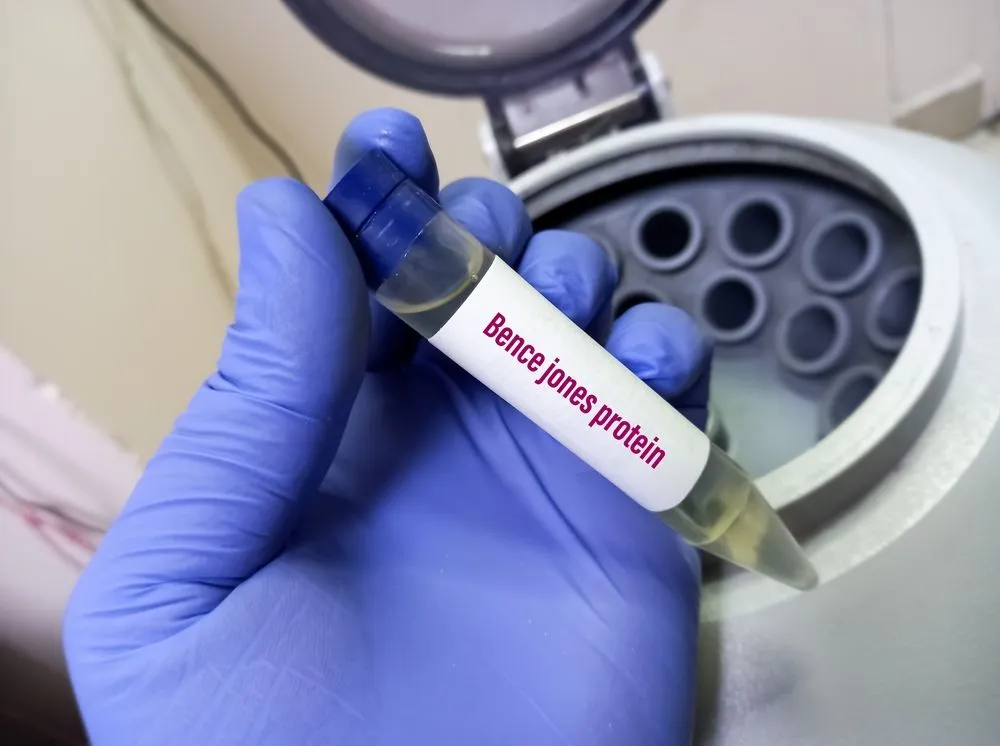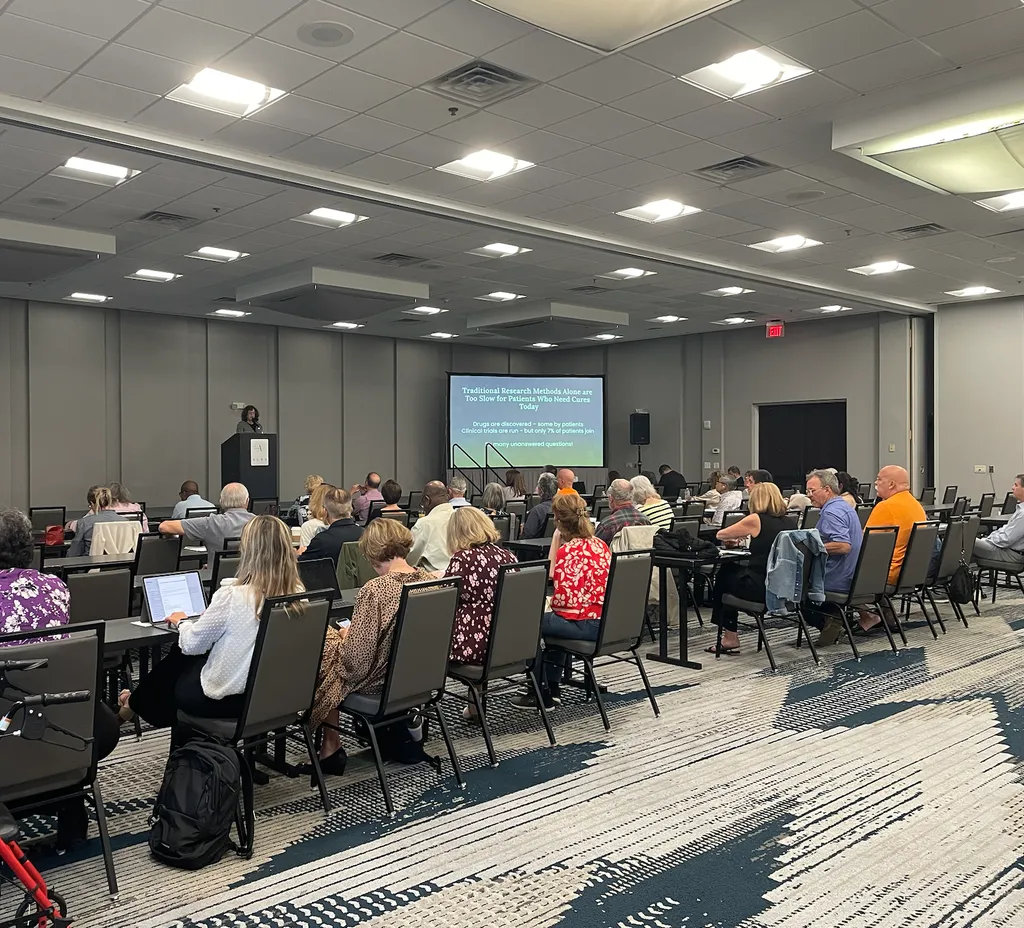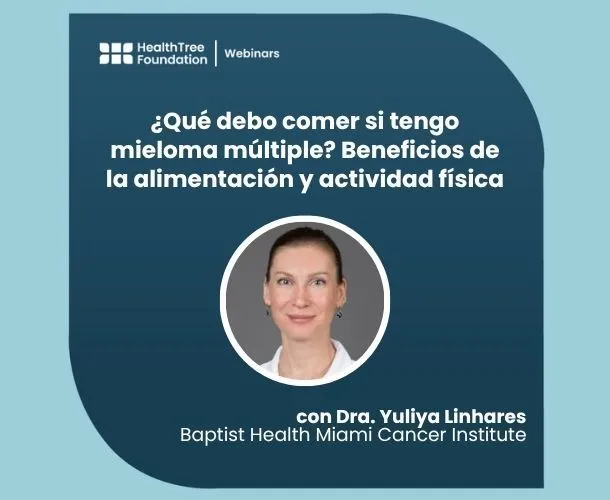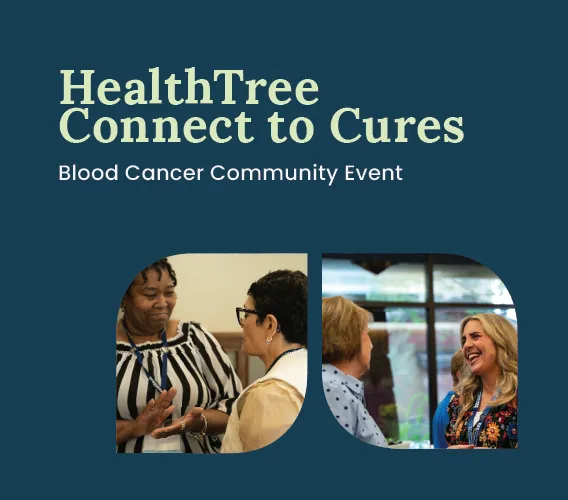Advancing Myeloma Research with Dr. Craig Hofmeister Through HealthTree Cure Hub

All of us have experienced pain. Pain is defined as an unpleasant bodily sensation that causes mild to severe physical discomfort and emotional distress and typically results from bodily disorder. Even though it has a precise definition, pain is experienced differently by every individual.
Pain is especially common among multiple myeloma patients. Around 70% of this population have bone pain at the time of diagnosis. Thus, optimizing pain management and understanding patients’ perceptions of pain deserves special attention from myeloma specialists.
Dr. Craig Hofmeister, MD, MPH (Emory Winship Cancer Institute) and Karen Sweiss, PharmD (University of Illinois Chicago), in collaboration with HealthTree, have developed two surveys intended to understand better patients’ insights regarding pain management in myeloma or its precursor conditions.
How Drs. Hofmeister and Sweiss Became Connected with HealthTree
Dr. Craig Hofmeister, a dedicated professor in the Department of Hematology and Medical Oncology at Emory University and board-certified hematologist, focuses his practice on plasma cell disorders, including myeloma and myeloma’s precursor conditions.
As a myeloma specialist usually treating patients with bone pain, Dr. Hofmeister has a well-structured plan for pain management, starting with non-steroidal anti-inflammatory drugs like Celebrex for mild pain, and shortly after, opioids come into the scene.
A combination of opioids plus acetaminophen like Norco for moderate pain, oral hydromorphone like Dilaudid for more severe pain, and fentanyl patches for persistent pain are only some examples of the current clinical applications of opioids for myeloma patients dealing with different types of pain.
However, new approaches, such as cannabis, are being taken by patients and physicians alike in order to alleviate pain.
Cannabis’ active ingredients, cannabidiol (CBD) with or without tetrahydrocannabinol (THC), also play a role in the management of chronic pain globally, according to review articles. Over the past two decades, the medical properties of CBD have been explored, yielding the U.S. Food and Drug Administration's approval of the first cannabis-derived medication for treating childhood epilepsy syndromes in 2018. Researchers have also tested CBD’s analgesic properties with promising results.
In collaboration with colleague and clinical assistant pharmacy professor and researcher Dr. Karen Sweiss, Dr. Hofmeister partnered with HealthTree Cure Hub to learn more about patient opinions on opioids and cannabis in multiple myeloma treatment for pain.
Together, they and the HealthTree Research team developed two surveys for patients to take to assess the community’s opinion on these pain management methods.
HealthTree’s valuable technology resources were used to reach out to the great online community of patients willing to dedicate some minutes to fill out the surveys and contribute to building scientific knowledge about this topic.
Experience and Attitudes Towards Opioids and Cannabis for Pain Management Surveys for Myeloma Patients
These two carefully designed surveys try to respond to questions like:
- How often do you currently experience pain?
- How would you score the severity of your pain?
- Does pain limit or impact any of the following parts of your life?
- Do you feel like your pain is adequately treated?
- Have you ever taken opioid medicines (examples: morphine, Dilaudid, Norco, Vicodin, hydrocodone) for pain?
- Have you ever declined to take opioid medicines?
- Have you ever used cannabis during your treatment for myeloma or precursor disease?
- Which symptom/indication did you take cannabis for?
- When you used cannabis for pain, was it effective?
All of this information is gathered confidentially and used purposefully to understand how myeloma patients perceive pain and its management and to build an idea of how effective opioids and cannabis are as painkillers specifically for the myeloma population since evidence to this day is very scarce.
While Drs. Hofmeister and Sweiss are gathering preliminary results, we encourage you to take the ~10-minute surveys below to contribute to this important research to help physicians better understand multiple myeloma pain management.
How to Access These Studies In HealthTree Cure Hub
To contribute to these ongoing research studies within HealthTree, you can create your free HealthTree Cure Hub account here.
Once you are logged in to your account, click on “Accelerate Research” and you will find these and all active research studies open to participate.
You can click on the surveys below to access Dr. Hofmeister’s ongoing studies in HealthTree:
Invitation to Participate in the Future of Myeloma
Science is built by the sum of single contributions, and every patient experience matters. We at HealthTree, along with present and future myeloma patients, appreciate every conclusion derived from these surveys and every other research study.
Patients and caregivers may struggle with the variety of symptoms and challenges to deal with when initially diagnosed and during the course of the disease.
As a very diverse clinical entity, myeloma patients may require solutions for bone pain, articular pain, neuropathic pain, body aches, and other symptoms.
The more treatment options studied and scientifically proven, the more opportunities to offer a better quality of life to every patient.
Dr. Hofmeister and his colleagues' research goal is to help expand the horizons in terms of myeloma pain management, and your contribution to these surveys is very valuable.
Finally, we invite our community to join us for the Launch of HealthTree 2.0 “Using Technology and Revolutionary Approaches to Cure Blood Cancers” on October 23, 2023, where you will learn how our unique model, innovative technology, and expansion plans will accelerate a myeloma cure.
We look forward to having you at a virtual watch party with patients and caregivers sharing their experiences through this myeloma journey. Together, we can build the future in the treatment of myeloma.
Register for the 2.0 Launch Today!
Thank you to our sponsors, Bristol Myers Squibb and Amgen for sponsoring this special 2.0 Launch event.
All of us have experienced pain. Pain is defined as an unpleasant bodily sensation that causes mild to severe physical discomfort and emotional distress and typically results from bodily disorder. Even though it has a precise definition, pain is experienced differently by every individual.
Pain is especially common among multiple myeloma patients. Around 70% of this population have bone pain at the time of diagnosis. Thus, optimizing pain management and understanding patients’ perceptions of pain deserves special attention from myeloma specialists.
Dr. Craig Hofmeister, MD, MPH (Emory Winship Cancer Institute) and Karen Sweiss, PharmD (University of Illinois Chicago), in collaboration with HealthTree, have developed two surveys intended to understand better patients’ insights regarding pain management in myeloma or its precursor conditions.
How Drs. Hofmeister and Sweiss Became Connected with HealthTree
Dr. Craig Hofmeister, a dedicated professor in the Department of Hematology and Medical Oncology at Emory University and board-certified hematologist, focuses his practice on plasma cell disorders, including myeloma and myeloma’s precursor conditions.
As a myeloma specialist usually treating patients with bone pain, Dr. Hofmeister has a well-structured plan for pain management, starting with non-steroidal anti-inflammatory drugs like Celebrex for mild pain, and shortly after, opioids come into the scene.
A combination of opioids plus acetaminophen like Norco for moderate pain, oral hydromorphone like Dilaudid for more severe pain, and fentanyl patches for persistent pain are only some examples of the current clinical applications of opioids for myeloma patients dealing with different types of pain.
However, new approaches, such as cannabis, are being taken by patients and physicians alike in order to alleviate pain.
Cannabis’ active ingredients, cannabidiol (CBD) with or without tetrahydrocannabinol (THC), also play a role in the management of chronic pain globally, according to review articles. Over the past two decades, the medical properties of CBD have been explored, yielding the U.S. Food and Drug Administration's approval of the first cannabis-derived medication for treating childhood epilepsy syndromes in 2018. Researchers have also tested CBD’s analgesic properties with promising results.
In collaboration with colleague and clinical assistant pharmacy professor and researcher Dr. Karen Sweiss, Dr. Hofmeister partnered with HealthTree Cure Hub to learn more about patient opinions on opioids and cannabis in multiple myeloma treatment for pain.
Together, they and the HealthTree Research team developed two surveys for patients to take to assess the community’s opinion on these pain management methods.
HealthTree’s valuable technology resources were used to reach out to the great online community of patients willing to dedicate some minutes to fill out the surveys and contribute to building scientific knowledge about this topic.
Experience and Attitudes Towards Opioids and Cannabis for Pain Management Surveys for Myeloma Patients
These two carefully designed surveys try to respond to questions like:
- How often do you currently experience pain?
- How would you score the severity of your pain?
- Does pain limit or impact any of the following parts of your life?
- Do you feel like your pain is adequately treated?
- Have you ever taken opioid medicines (examples: morphine, Dilaudid, Norco, Vicodin, hydrocodone) for pain?
- Have you ever declined to take opioid medicines?
- Have you ever used cannabis during your treatment for myeloma or precursor disease?
- Which symptom/indication did you take cannabis for?
- When you used cannabis for pain, was it effective?
All of this information is gathered confidentially and used purposefully to understand how myeloma patients perceive pain and its management and to build an idea of how effective opioids and cannabis are as painkillers specifically for the myeloma population since evidence to this day is very scarce.
While Drs. Hofmeister and Sweiss are gathering preliminary results, we encourage you to take the ~10-minute surveys below to contribute to this important research to help physicians better understand multiple myeloma pain management.
How to Access These Studies In HealthTree Cure Hub
To contribute to these ongoing research studies within HealthTree, you can create your free HealthTree Cure Hub account here.
Once you are logged in to your account, click on “Accelerate Research” and you will find these and all active research studies open to participate.
You can click on the surveys below to access Dr. Hofmeister’s ongoing studies in HealthTree:
Invitation to Participate in the Future of Myeloma
Science is built by the sum of single contributions, and every patient experience matters. We at HealthTree, along with present and future myeloma patients, appreciate every conclusion derived from these surveys and every other research study.
Patients and caregivers may struggle with the variety of symptoms and challenges to deal with when initially diagnosed and during the course of the disease.
As a very diverse clinical entity, myeloma patients may require solutions for bone pain, articular pain, neuropathic pain, body aches, and other symptoms.
The more treatment options studied and scientifically proven, the more opportunities to offer a better quality of life to every patient.
Dr. Hofmeister and his colleagues' research goal is to help expand the horizons in terms of myeloma pain management, and your contribution to these surveys is very valuable.
Finally, we invite our community to join us for the Launch of HealthTree 2.0 “Using Technology and Revolutionary Approaches to Cure Blood Cancers” on October 23, 2023, where you will learn how our unique model, innovative technology, and expansion plans will accelerate a myeloma cure.
We look forward to having you at a virtual watch party with patients and caregivers sharing their experiences through this myeloma journey. Together, we can build the future in the treatment of myeloma.
Register for the 2.0 Launch Today!
Thank you to our sponsors, Bristol Myers Squibb and Amgen for sponsoring this special 2.0 Launch event.

about the author
Mariana Castro
Mariana, an International Medical Graduate, is a member of the Myeloma Navigators team. She utilizes her medical knowledge to assist myeloma patients in understanding vital information from their medical records and keeping track of their laboratory and genetic test results in CureHub. Mariana is also an advocate for promoting a healthy and balanced lifestyle. She actively engages in activities such as practicing Yoga, instructing Pilates, and playing Padel in her spare time. She also cherishes moments spent with her family, boyfriend, and beloved dogs.
More on HealthTree Research
Trending Articles




Get the Latest Multiple Myeloma Updates, Delivered to You.
By subscribing to the HealthTree newsletter, you'll receive the latest research, treatment updates, and expert insights to help you navigate your health.













